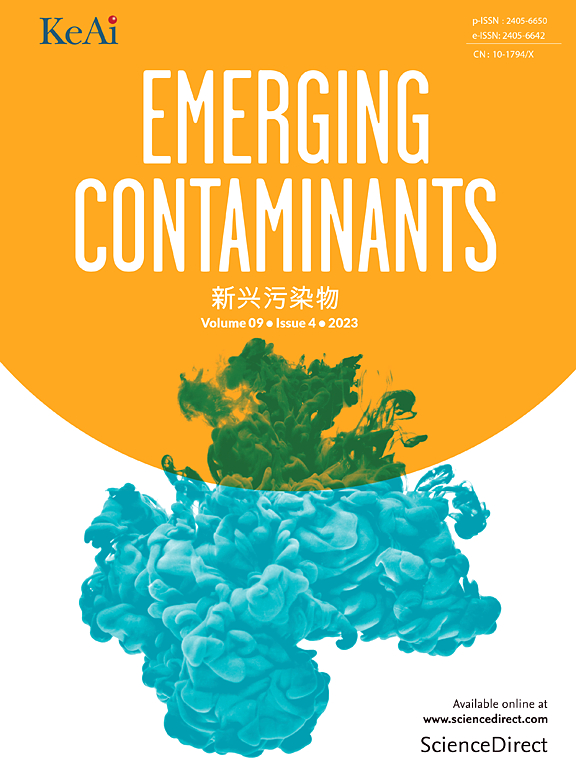Pharmaceuticals as emerging pollutants: Implications for water resource management in Malaysia
IF 6.9
2区 环境科学与生态学
Q1 ENVIRONMENTAL SCIENCES
引用次数: 0
Abstract
The escalating contamination of water bodies with pharmaceuticals has raised global concerns due to potential health repercussions. This review aims to provide comprehensive insights into the occurrence of pharmaceuticals in Malaysian water bodies. Following PRISMA-ScR guidelines, a scoping review of studies from 2007 to 2024 was conducted using the Scopus, Web of Science and Google Scholar databases. Forty articles were included, reporting on pharmaceutical compounds in various water matrices. Analysis revealed 65 active pharmaceutical compounds spanning major therapeutic classes such as NSAIDs, antidiabetics, antihypertensives, antibacterials and natural and synthetic estrogens. Surface water was the most frequently studied matrix (n = 23), followed by sewage treatment plant effluent (n = 10), tap water (n = 11) and surface sediment (n = 7). Geographically, Selangor state accounted for the majority of studies (n = 29), with limited research in other states, reflecting a notable gap in national monitoring efforts. One of the main contributors to pharmaceutical occurrence in water bodies is household disposal. Despite the higher concentration of pharmaceutical residues in influent and effluent discharges compared to surface water, it is worth highlighting the removal capacity of wastewater treatment plants and the effectiveness of remediation processes. Despite these findings, research on pharmaceutical residues remains limited, with only seven out of Malaysia's 14 states investigated. This lack of comprehensive data underscores the urgent need for nationwide monitoring programmes and the integration of pharmaceutical pollution within national water quality standards. Given the environmental and public health implications, addressing this emerging pollutant issue necessitates a multifaceted approach to mitigate human exposure, safeguard water quality and ensure the sustainable management of water resources.
作为新兴污染物的药品:对马来西亚水资源管理的影响
由于潜在的健康影响,不断升级的药物污染水体已引起全球关注。这篇综述的目的是提供全面的见解,药物在马来西亚水体的发生。根据PRISMA-ScR指南,使用Scopus、Web of Science和b谷歌Scholar数据库对2007年至2024年的研究进行了范围审查。包括40篇文章,报道了各种水基质中的药物化合物。分析发现了65种活性药物化合物,包括非甾体抗炎药、抗糖尿病药、抗高血压药、抗菌药物以及天然和合成雌激素等主要治疗类别。地表水是最常研究的基质(n = 23),其次是污水处理厂废水(n = 10),自来水(n = 11)和地表沉积物(n = 7)。从地理上看,雪兰莪州占研究的大多数(n = 29),其他州的研究有限,反映了国家监测工作的显着差距。水体中药物发生的主要原因之一是家庭处理。尽管与地表水相比,进水和流出排放物中的药物残留物浓度更高,但值得强调的是废水处理厂的去除能力和修复过程的有效性。尽管有这些发现,对药物残留的研究仍然有限,马来西亚14个州中只有7个州进行了调查。由于缺乏全面的数据,因此迫切需要制定全国性的监测方案,并将药品污染纳入国家水质标准。鉴于对环境和公共健康的影响,解决这一新出现的污染物问题需要采取多方面的办法,以减少人类接触、保障水质和确保水资源的可持续管理。
本文章由计算机程序翻译,如有差异,请以英文原文为准。
求助全文
约1分钟内获得全文
求助全文
来源期刊

Emerging Contaminants
Medicine-Public Health, Environmental and Occupational Health
CiteScore
10.00
自引率
6.70%
发文量
35
审稿时长
44 days
期刊介绍:
Emerging Contaminants is an outlet for world-leading research addressing problems associated with environmental contamination caused by emerging contaminants and their solutions. Emerging contaminants are defined as chemicals that are not currently (or have been only recently) regulated and about which there exist concerns regarding their impact on human or ecological health. Examples of emerging contaminants include disinfection by-products, pharmaceutical and personal care products, persistent organic chemicals, and mercury etc. as well as their degradation products. We encourage papers addressing science that facilitates greater understanding of the nature, extent, and impacts of the presence of emerging contaminants in the environment; technology that exploits original principles to reduce and control their environmental presence; as well as the development, implementation and efficacy of national and international policies to protect human health and the environment from emerging contaminants.
 求助内容:
求助内容: 应助结果提醒方式:
应助结果提醒方式:


